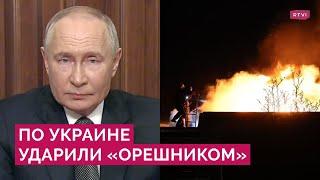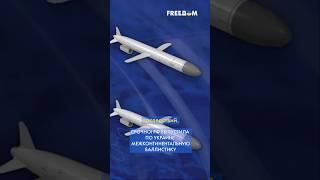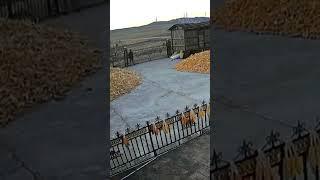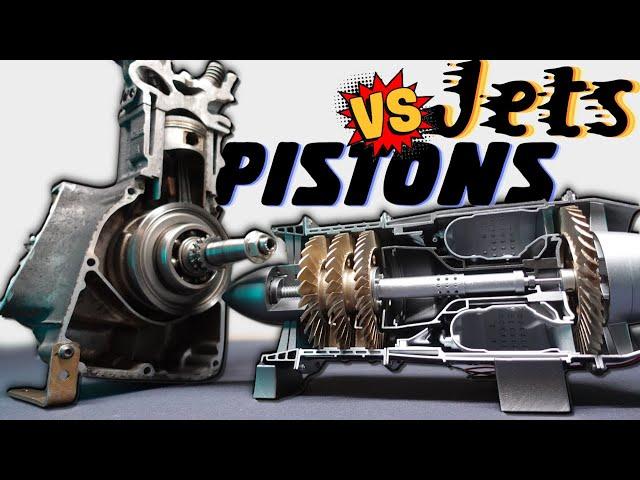
Appreciating The Beauty of Jet Engines by Juxtaposing Them Against Piston Engines
Комментарии:

I just love how you can explain everything so simple way that even a braindead manchild like me can understand 😁
Ответить
This guy explained it well turbojet is the basics of all jet engine including turbofan ,turboprop, etc
Ответить
There are 2 significant errors in this presentation:
1) pressure does not increase in a gas turbine during combustion, as any compressor could not push air in one direction if the pressure oppsoing it is greater. The exact opposite is true: beyond the compressor the pressure is only reduced. What does increase (significantly) is velocity.
2) gas turbines (of any kind) are less efficient than piston engines. That's false, as hp produced per volume of fuel consumed is in modern turbines close or some times above that of the IC engines.
Bonus: the gas leaving the combustors has to be below a certain temperature.... welp, not necessarily. In 1940's that may have been the case but modern high performance turbine blades can even operate at temoeratures beyond their melting point (!!!) thanks to extremely advanced cooling and heat dissapation design.
Bonus 2:
Compressor surge can not physically happen on a jet engine. Or gas turbine for that matter. You are mixing compressors/pumps with gas turbines. Literally apples and oranges.

The pressure increase is about 1.2 x the pressure per stage. So a large commercial aircraft engine with 14 stages has a huge pressure increase across all the stages
Ответить
Is it just me or is the turbine placed in such a way that it would spin in a direction counter to the compressors?
Ответить
2 questions:
Is it possible to make a turbofan diesel engine?
Is it possible to combine a turboprop and jet propulsions into one engine?

great! clearest explanation I saw! thank you
Ответить
At the very beginning you characterize both engines as internal combustion engines. Yes, the piston engine is obviously just that. But the jet, since combustion takes place continuously is by nature a more "open" design. Air and air mixing with liquid fuel is always entering the engine from outside and at no point is it sealed off internally. For that reason I always was taught that jets are external combustion engines.
Ответить
You deserve soo much sir i appreciate 😊
Ответить
The PRESSURE DECREASES in the combustor. Otherwise, air would be driven BACKWARDS through the intake compressors. However, the VOLUME increases greatly, increasing available PV work. The volume increase powers the expander turbine.
Ответить
I can't comprehend the blade direction between the intake and exhaust. It looks like exhaust blades would want to spin the opposite direction.
Ответить
What's the difference between a turbine and a fan? Back in the '90s GE was working on what they were calling the "unducted fan". It looked like a fancy propeller to me. The nomenclature for various types of the same thing gets confusing and I've never found an adequate definition.
The best I've found was that a propeller transfers power through the center shaft whereas a fan transfers power via thrust. But I don't know if this definition is correct or not.

So basically, a jet engine is a just a turbocharger that provides its own exhaust
Ответить
good job explaining 😊
Ответить
Analog vs digital
Ответить
Best teacher
Ответить
Very didactic content, I really enjoy your channel man!
Ответить
My father drove a jet engine moped in university. It was called the "eunukki".
Ответить
So is it true that the fan in the rear doesn't directly contribute to the thrust? For example, could the rear fan be removed if the fans in the front were driven externally?
Ответить
Wow ! Am a CPL student and this is so much important for me to understand the turbine engine even more
Ответить
Man this video is so immersive 😮
Ответить
Wondering how one can be used as a gas turbine for a domestic combined heat and power boiler. Need maybe 1200 hours/ year in the south of England, up to double this in colder parts of GB. Then longer term a turbine using wood chips as the energy source, not clean liquid fuel. Boiler makers gave up with domestic combined heat and power in the UK, too complicated, and not green energy. Wood burning stoves seem all about the natural draw of the air, not with a fan on the output driving a fan on the input + a generator. Soot and tar with wood combustion products, maybe need an indirect gas, recirculating steam/water?
Unlikely any regular home would need more than 6kWh/ day for electricity which isn't heating or hot water, so over 180 days say need 1400 kWh, and for all that extra complexity probably better buying from the grid, unless design, cost, and service is super optimised.

Cool intro!
Ответить
Now I’d love to see turboprop and turbofan engines covered.
Ответить
Are you an offroad rider as well?
Ответить
Where do you get the cross section models?
Ответить
You’re a good teacher. Make sure you get in front of some kids..
Ответить
👏🏽👏🏽👏🏽👏🏽👏🏽👏🏽👏🏽
Ответить
Most people talking about engines: power, torque, fuel consumption...
D4A: BALANCE!!!1!

A jet engine's compressor blades are not increasing the potential energy of the incoming air, neither does the combustor. By the combustion process, CHEMICAL ENERGY of the injected fuel is (partly) converted to kinetic energy of the gas mixture, thereby increasing its speed. This kinetic energy is then (again partly) harvested as usable work by the turbine.
Potential energy is solely given by the term E = m * g * h (mass, g-konstant, height) and has nothing to do with the combustion inside an engine.

please buy a new mic or do better audio processing , your videos are great but the audio is strangely unclear.
Ответить
Great explanation!
But I think "Jet" engines (especially modern turbofans) rely on both suction and exhaust to produce thrust.
There are also cases of jet engines from aircraft (like what you describe) getting repurposed into torque applications (where the engine does not directly produce thrust) such as in the M1 Abrams battle tank.
I also think that the early stealth aircraft relied more on suction than exhaust because they had to cool and disperse their exhaust through small openings to reduce their heat signatures and reduce radar cross section.

I know that the turbine never caught on for powering cars, you might have already made a video about that. But why didn't it loose out to the diesel engine for other applications such as railroad, which generally uses electricity to transmit the torque from the engine to the wheels anyway? It's application in a tank seems to be successful.
Ответить
There's never been a turbine with a soul.
Just whistling appliances...

Great video as usual. After the vibrations demo on the motorcycle, I was expecting the same on a jet engine.
Ответить
Until you make peace with who you are, you'll never be content with what you have.
Ответить
Life is so constructed that an event does not, cannot, will not, match the expectation.
Ответить
Thank you. Frank Whittle would be proud of you. Do you know how the new Rise engines work? They look like weird propellers engines.
Ответить
Ha! I’m so glad you mentioned the backyards drive turbine! I was questioning my sanity looking at that 😂😂
Ответить
Jet Engine = Suck, Squeeze, Bang, Zoom
Ответить
Really good jet engine model, but somebody messed up turbine part, it will spin compressor in opposite direction then required
Ответить
Another excellent video. Brilliantly presented.
Ответить
ive posted a half dozen truthful, non inflammatory comments related precisely to education, instruction and autodidactic heutagogy. They were all removed! Why?! Wtf?!
Ответить
❤ well explained
Ответить
the turbine blades in the model jet engine is the opposite pitch, they would cause the compressor blades to run in reverse.
Ответить
excellent explanation
Ответить
so yes unlimited power but durability caps us
Ответить
If the jet engine work like an impact reaction tool it will be comparable of an piston energy consumption but with a greater speed, pulse jet resonance is the answer
Ответить


![[Lyrics | 가사] 죠지 (George) - 보트 (Boat) [Lyrics | 가사] 죠지 (George) - 보트 (Boat)](https://rtube.cc/img/upload/MDlwN1hOUjFMV08.jpg)



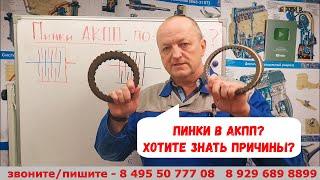


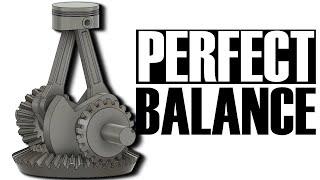
![[ASMR] OPENING 16 *DIAMOND* TIKTOK MYSTERY BOXES!! *RAREST FINDS YET!*🫢 Full TikTok Compilation [ASMR] OPENING 16 *DIAMOND* TIKTOK MYSTERY BOXES!! *RAREST FINDS YET!*🫢 Full TikTok Compilation](https://rtube.cc/img/upload/czlCQzVPS1pBd0g.jpg)






